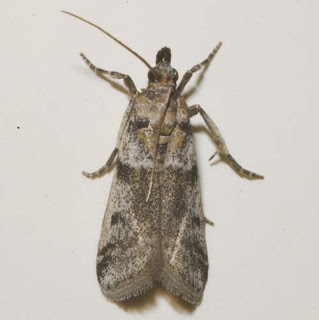
Joel Siegel, USDA ARS Reports
Navel Orangeworm is High This Season
This year, there were probably a lot of overwintering populations.
Navel Orangeworm is High This Season
Almond and pistachio growers appear to be more on top of Navel Orangeworm control this season compared to last year. “It’s human nature because all the people who got burned last year are paying a lot more attention this year,” said Joel Siegel, USDA ARS entomologist based in Parlier, Calif.
Siegel said that in the areas where he works, he is seeing the same type of population levels as he saw last year. These areas are normally under very high NOW pressure–where almonds, pistachios and figs are close together such as in Madera County–causing a perfect storm of pressure year after year.
 |
|
Joel Siegel is USDA ARS Research
Entomologist based in Parlier
|
“I am also seeing growers with traps showing very low levels of populations, so NOW is bouncing around quite a bit this year,” Siegel said.
What causes a high pressure year? Siegel suggests three things:
- Heat Unit Accumulation
- Overwintering Populations
- Nut Development Rate
This year, there were probably a lot of overwintering populations.
In terms of heat units, from the NOW point of view, we are about 17 days ahead of last year,” Siegel noted. “But harvest is going to be much earlier this year than last year. “If we were going to have a late harvest with all these moths out there, there would be greater damage due to crop exposure,” he said.
“However, if everyone is harvesting two to three weeks earlier, growers may be able to dodge the late pressure,” he said.
If pistachios prices continue to hold and growers are committed to that second shake maybe deep into September, there could be a lot of NOW pressure. Pistachio harvest this year may start as early as the last week of August, and the early almond harvest may be starting this week.
Siegel said the Suttera BioLure has been very helpful this year. “It is every bit as good as my virgin female traps,” he said. “The advantage of BioLure is that if you are running live females in a trap and there is a spray operation, the moths would be killed, and those traps will not be attracting males. With BioLure, you will still be catching males,” Siegel said.
 |
| Adult Navel Orangeworm |
This past spring, UC farm advisors and other researchers held an urgent meeting in Visalia to warn growers of the assured high NOW pressure this year. Researchers said that it would be very important for growers to apply a May spray to beat back the early NOW populations. “But the pressure is there, and I have not seen a real drop this year,” Siegel said.
Siegel noted that during the hot weather which occurred in late June and early July, male population numbers dropped. “But when the heat broke around July 6, the capture rate tripled. I had traps that were catching 30 per trap, and within three days, they were catching 149 per trap,” he said. “Most of the males hunkered down for days during the heavy heat and once daytime temperatures dropped, their normal nighttime activity picked up,” Siegel said. “Interestingly, gravid females were still laying eggs during the heatwave, and egg traps did not have the same level of depression.”








